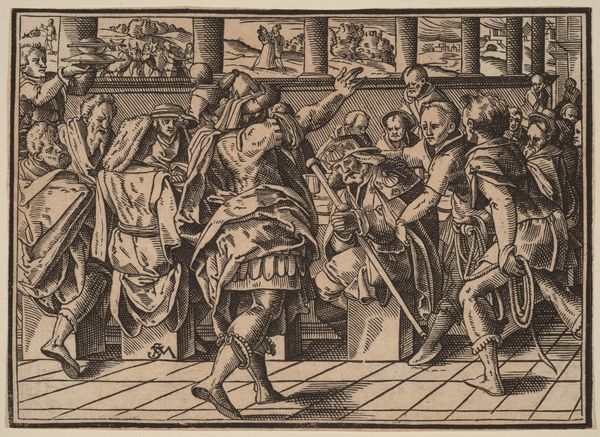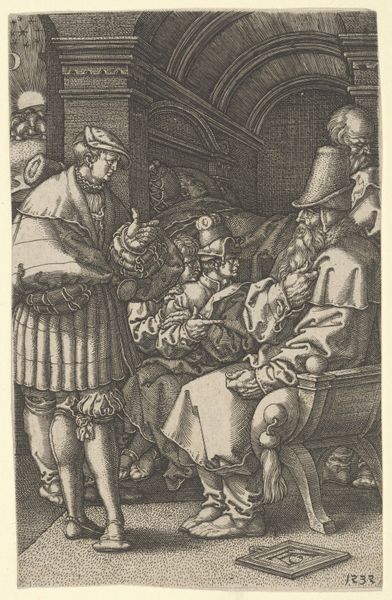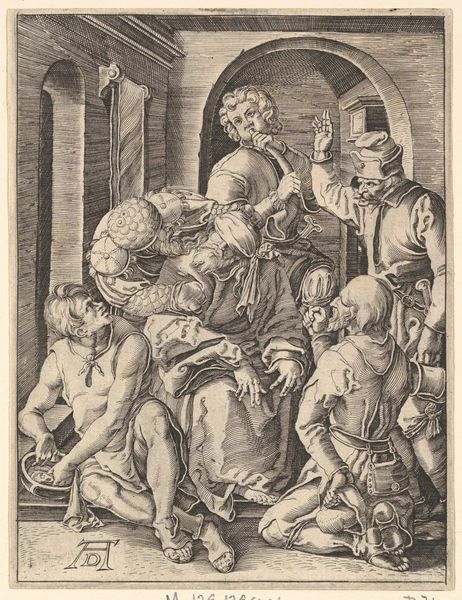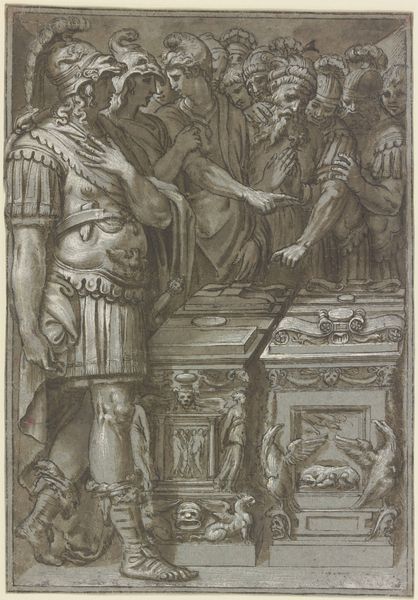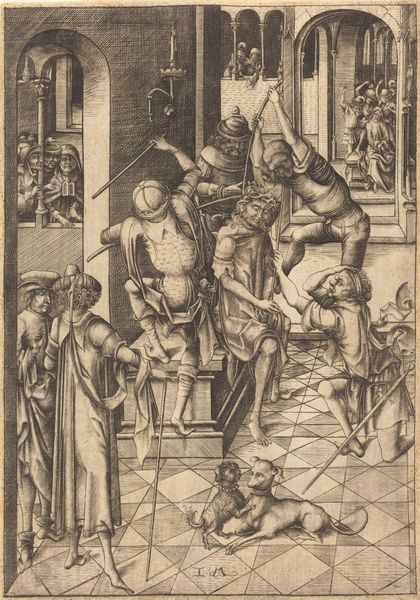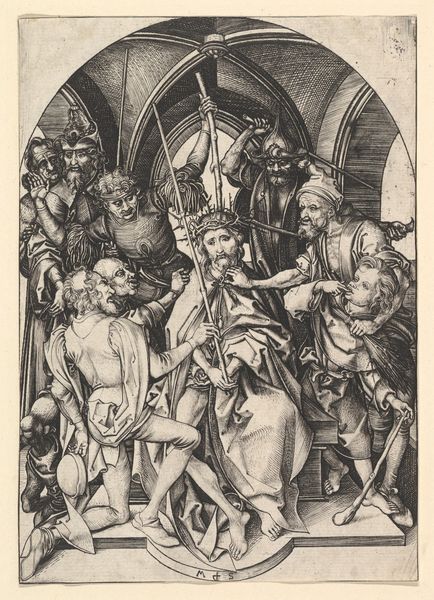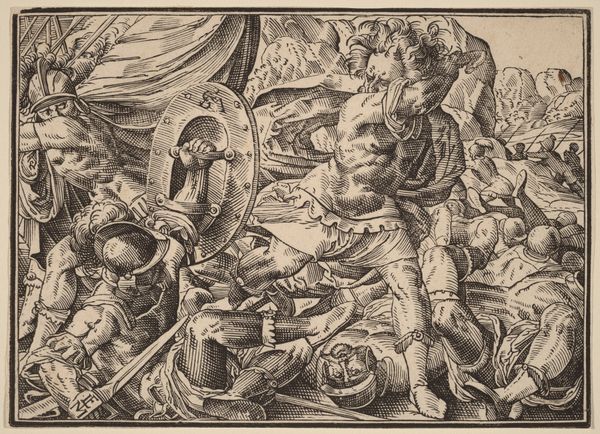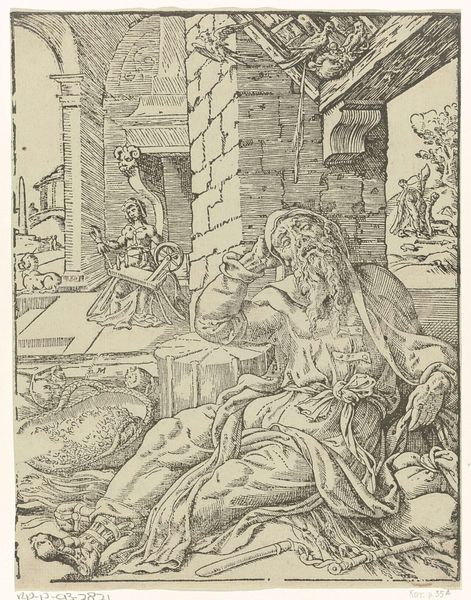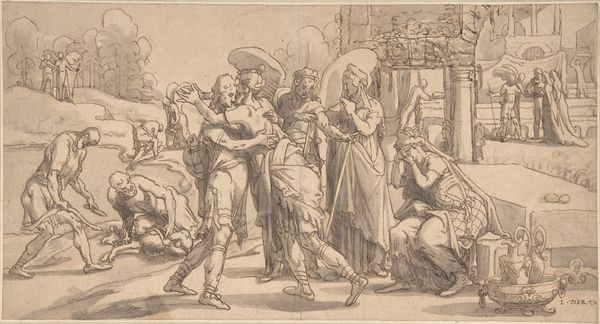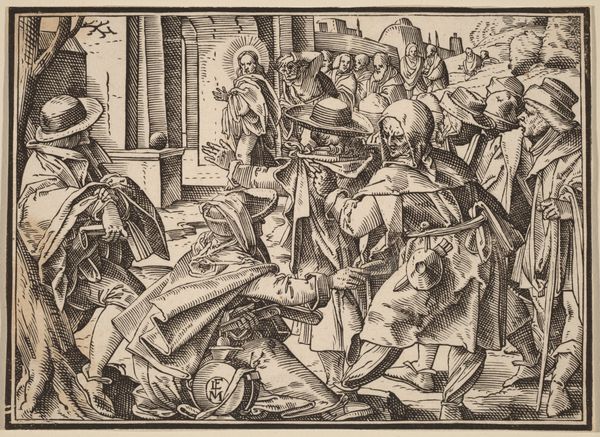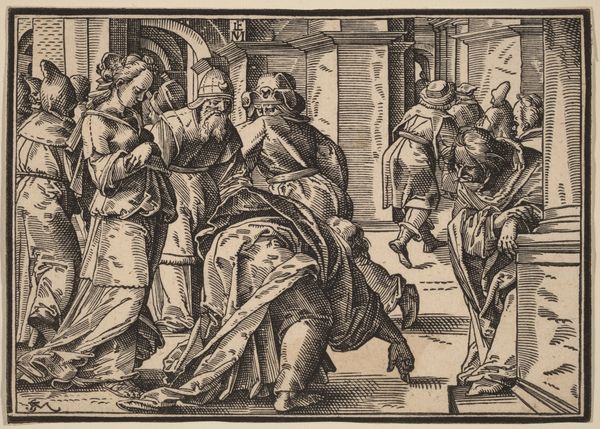
Christ Tells His Disciples of the Last Judgment Possibly 1630
0:00
0:00
drawing, print, ink, engraving
#
drawing
#
ink drawing
#
narrative-art
#
pen drawing
# print
#
figuration
#
ink
#
engraving
Dimensions: sheet: 10.7 x 14.7 cm (4 3/16 x 5 13/16 in.)
Copyright: National Gallery of Art: CC0 1.0
Curator: Look at the detail in Christoph Murer's "Christ Tells His Disciples of the Last Judgment," possibly from 1630. What's your first impression? Editor: My eye is drawn to the dense network of lines. The material itself-- the engraving, the ink--it emphasizes labor and almost feels claustrophobic. Curator: It is, in some ways. The weight of the message, the announcement of judgment, seems to physically burden them. The figures are overwhelmed; their postures embody despair and disbelief. How does that connect, do you think, with broader cultural anxieties of the period? Editor: Considering the social context, this was a time of religious and political upheaval, where the materials become a form of commentary. Murer uses line and form to materialize that fear. The hard work etching implies it's a hard truth to be manifested through labor. Curator: Absolutely. And it implicates us as viewers, doesn't it? Judgment wasn't just a far-off concept; it was intimately tied to their everyday experience of religious and social expectations. Think of the social expectations it held. Editor: Yes, you see it also with the chest centered behind them with lock and key -- like these anxieties are being secured, but at a cost to physical work itself. Curator: That's interesting. It reminds me of Walter Benjamin's idea of history as a pile of debris, where the weight of the past presses down on the present. The expressions are critical of something bigger than themselves: that is important and shouldn’t be forgotten. Editor: Looking closer, the architecture feels equally important as the human form here, and it seems to reinforce some of that anxiety through this almost oppressive material weight. Curator: A point well-made. The medium certainly enhances the sense of urgency. The ink amplifies that sense of impending reckoning, doesn't it? A somber artwork. Editor: True, and yet it gives us clues as to how to create more empathetic futures, even amidst the constant flux of consumption and meaning.
Comments
No comments
Be the first to comment and join the conversation on the ultimate creative platform.
